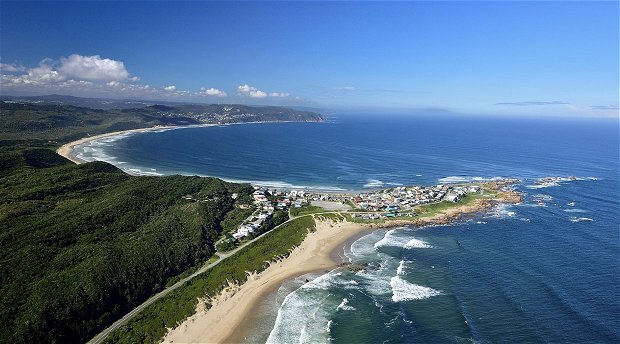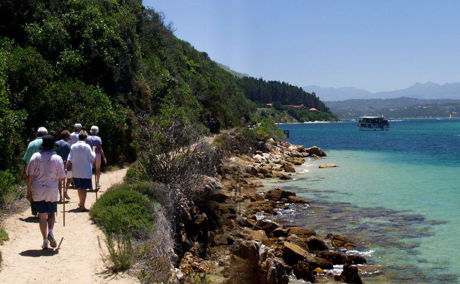Knysna’s Trent Read has been involved in the business of art for 50 years.
'It's a pity I didn't bring any swords' and the wreck of the Seier

Why would a ghost ship smell?
This is the story of the last days of the 491 ton sailing ship Seier, which met her end near Knysna on the 23rd of May, 1904.
Built in Risør in Norway in 1885, registered in Kopevik (also in Norway), and sailing for owners Severin Larsen under her master, Peder Larsen, the Seier was a three-masted barque (a vessel with square rig on the foremast and mainmast, and fore-and-aft rig on the mizzenmast). She was typical of the cargo carriers of her day, with a wide, spacious hull designed for bulk loading.
On her final voyage, she sailed from Goole, in England, carrying, amongst other things, hundreds of barrels of creosote for delivery to the railway sleeper factory in Knysna (where the sleepers were made from yellowwood harvested from the local, indigenous evergreen forests - a disaster of its own that played out over a period of almost two hundred years!)
Wreck of the Seier
The story goes that captain Larsen ‘mistook’ the Goukamma River mouth for the mouth of the Knysna Lagoon (where the harbour was situated) - but this is difficult to believe, since the Goukamma River makes its wide, shallow, lazy way into the sea across the beach west of Buffalo Bay, while the Knysna Heads are two enormous sandstone cliffs that stand like towers over the narrow, shallow, dangerous channel that separates the Knysna Estuary from the Indian Ocean.
And, since the Knysna Heads was the official (only!) entry to the harbour, they were guarded, too, by the harbourmaster and pilot, John Benn II, who would have raised a signal that would have indicated whether or not it was safe to enter.
But, this being the time when many ageing sailing vessels were being scrapped in favour of more profitable, faster, and bigger steamships, let’s not cast any aspersions on the reason for the accident...
Anyway, and to cut a long story short, Larsen is said to have realised that he was on a course for a beaching (which wouldn’t have done much good if he was indeed trying to wreck his command) - so he turned around at the last moment.
Which worked, because he sailed smack-bang onto a submerged rock that lay west of Walker Point, and about three miles offshore.
The Seier began taking on water immediately, and Larsen steered her for The Point at Buffalo Bay, where she came to rest on the rocks, and from where the entire crew were rescued by local fishermen who had witnessed the event.
Creosote spill
The ship broke up quickly, and she was disposed of just as quickly: at the instruction of her owners, she was sold at auction only five days later, fetching a total of just £16 .
In the interim, her cargo had escaped from the holds, and many of the barrels of creosote had broken up in the surf - and spilled their oily, smelly mess onto the beach and the shore.
Many of them were rescued, though - salvaged by the locals, and taken by sleighs and ox wagons to Brenton-on-Sea and over the Brenton Peninsula to Brenton-on-Lake, from where they were floated across the Knysna Lagoon to the sleeper factory on Thesen Island.
And the price the factory paid to those hardy adventurers who went to all this trouble?
Four shillings and sixpence.
A barrel.
What was left of the ship was either broken up by the waves, or carted off for use elsewhere - the masts, for example, were sawn into slabs, although all but one of them were lost in a fire at Brenton some months later. (The survivor was sold to the sawmillers, Thesen & Co., and dragged and floated to its destination in the same way as its erstwhile shipmates, those last surviving barrels).
It’s a pity I didn’t bring any swords: Children’s novel
And this, of course, is the reason the Spirit of Seier - the ghost of the ss Seier that features in Martin Hatchuel’s ghoulishly lekker children’s novel, It’s a pity I didn’t bring any swords - is always preceded by the stench of creosote whenever it appears to Leaf and his friend, Blueberry, the ghost of the sailor boy, on their quest to find Blueberry’s lost grandfather.
Of course, too, it doesn’t explain why the most famous ghost ship of all, the Flying Dutchman (the fully rigged Dutch fluijt under command of the evil pirate captain, Hendrick van der Decken), smells of rot and decay - but we’re pretty sure you can work THAT one out for yourself...
Editor and book designer
‘It’s a pity I didn’t bring any swords' is edited by Mike Kantey of Watercourse, Plettenberg Bay, with cover design and book design by Christian Jaggers of OneDesign, Cape Town.
Image: Buffalo Bay, Knysna, South Africa by South African Tourism. Originally published on Flickr
Further Reading
Total commitment and a love for animals drives this Plettenberg Bay woman to try and change the law about whether animals can own the land on which they live, and so protect their habitat forever.
Opened to guests in 1984, Knysna’s Featherbed Nature Reserve quickly grew into one of the Garden Route’s biggest tourism attractions. Martin Hatchuel takes a look at its origins and early history under its founder, William Smith. Please scroll down for a gallery of pics.




Share This Post